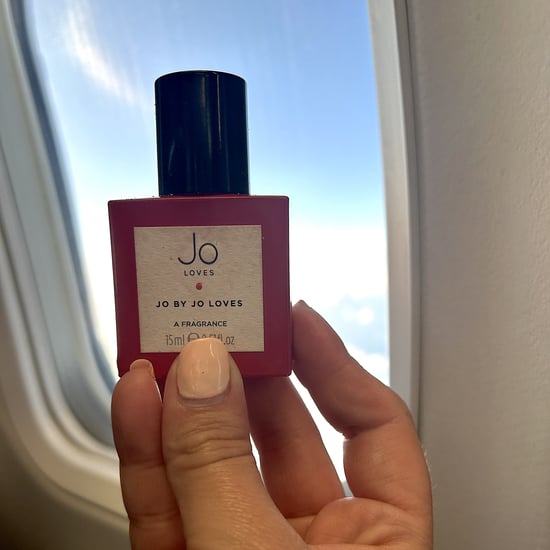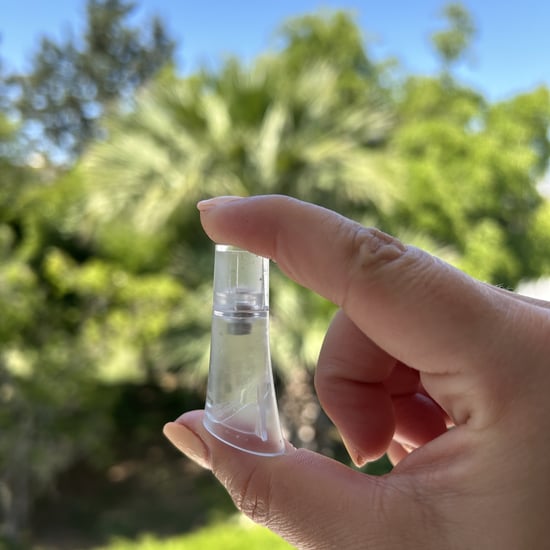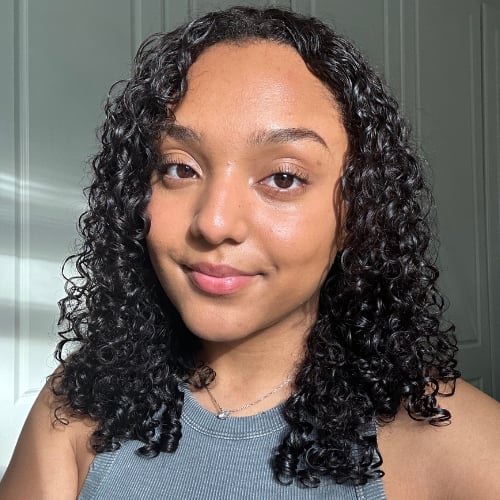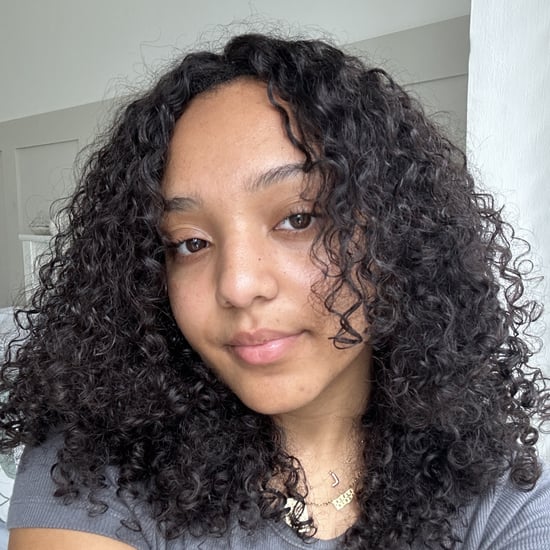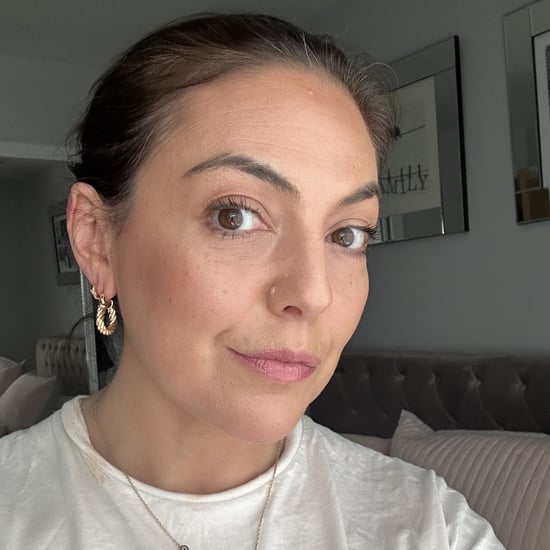Should I Eat Exact Serving Sizes?
To Stop Overeating, I Ate Exact Serving Sizes For a Week — I Failed but Learned This

I'm a serial out-of-the-bag snacker, and I can tell you exactly why. I like feeling unrestricted by anything but the bottom of the bag. I like shaking the crumbs into my mouth at the end. I like that I don't have to wash extra dishes.
I've read so much about how easy this habit makes it to binge and overeat, and I happily ignored all of that advice until recently. Ignoring my portion sizes has gone from occasional binges to frequent overeating, almost on a schedule — big scoops of peanut butter with breakfast, handfuls of pretzels in the afternoon, huge egg scrambles for dinner followed by chocolate spread straight out of the jar. The bigger the portion size, the faster my joy of eating it fades, but with the bag or plate or jar right there, it's so satisfying to keep nibbling until I feel bloated and nauseous.
What I Did
To curb my overeating, I decided to eat no more than a full, FDA-approved serving size (the one printed on food labels) for every food I ate. The goal was to hold out for a full week and see how it affected what I ate and how much I ate, and how I felt afterward.
I don't like imposing rules on my eating; the temptation to rebel always gets the best of me. But I liked how accessible this was: all I had to do was read the label, break out my measuring cups, and eat. And I was sick of eating past the point of satisfaction. Maybe if there was "someone else" telling me how much to eat, I'd be able to control myself.
What Happened?
The first night, I decided to make scrambled eggs with avocado on top. I looked up the serving size of an avocado online (one-third of an avocado — not bad), then carefully turned over the carton of eggs to check the label. I stared. Then I laughed. The serving size was one egg. I don't think I've eaten just one scrambled egg since I turned double digits. Then I did something that would become a habit for me over the next week: said "screw it," ignored the one egg serving size, and cracked open four.
"I'll start tomorrow," I told myself and inhaled the eggs.
Over the course of the week, I tried to portion out everything I ate, with varying degrees of success. I counted out pretzels, nuts, and pieces of cereal, measured out almond milk to the half-cup, cut my avocados into thirds, and scooped out peanut butter with a tablespoon, scraping off the excess with a knife.
My normal routines started to fall apart. Eating a lighter dinner meant I couldn't wait for my 16-hour intermittent fasting window to end every morning; I started regularly cutting it three or four hours short and wolfing down my portioned-out breakfast and snacks before noon, throwing off my eating schedule even more. It got worse and worse throughout the day.
At night, without the distraction of work, I'd really start to fall apart. I'd prepare and eat my dinner, but it wasn't enough. I'd eat the serving size of 21 pretzels, 31 pieces of cereal, and half a cup of yoghurt afterward; it wasn't enough. I was miserable, I was frantically hungry, and I snapped. One night, I gorged myself on pretzels until my lips got chapped from the salt. I scooped through half of a hummus container in one sitting.
On two consecutive nights late in the week, I popped open a bag of Reese's Peanut Butter Cups and ate six in a row (serving size: one Reese's cup). After just the second chocolate, I felt so disappointed in myself that I gave up and let it turn into an all-out binge. The sugar made me feel jittery and tired at the same time . . . plus bloated, plus ashamed. I was less focussed, and I wasn't sleeping well. I was overeating — the exact thing I wanted to avoid — with foods I didn't usually binge on and feeling even guiltier than before because now I was "breaking the rules." I couldn't wait for the week to be over.
It Didn't Work — Here's Why
My hope was that setting these rules in place would help me stay on track and stop overeating. Safe to say that backfired, and for two different reasons. One: I wanted to eat beyond the portion size and break the rules simply because they were rules. Two: the servings just weren't enough for me. I was hungry, and that overrode all of my self-control.
After the unceremonious end of my experiment, as I tried to figure out why it had gone so badly, I turned to registered dietitian Kristin Kirkpatrick of the Cleveland Clinic's Wellness Institute for advice. First, she reminded me that the labeled serving sizes aren't necessarily recommendations. The purpose of the labels isn't to tell you how much you should eat, but to give an estimate of how much you (or the average American) actually are eating and to provide nutrition information for that amount. They were even recently updated to reflect current eating practices.
This might not sound like a big distinction, but looking back on my experiment after the fact, it's a pretty drastic shift of mindset. It's the difference between someone telling you what to do versus simply giving information about what most people are doing. I struggled with holding myself to serving-size restrictions, and that was my mistake: thinking that they were hard and fast rules in the first place.
Beyond that, it was a lesson: when it comes to diet, strict rules can backfire.
The second lesson? That ignoring your body has consequences. "Portion sizes are standards but don't fit a one-size-fits-all approach," Kristin told me. It's more important, she said, to rely on your hunger cues and eat until you're full. "Your actual hunger will always lead you in the right direction," she said. Refusing to listen to it worked against me in two ways. I'd eat my "correct" serving sizes during the day without ever getting full, which made me miserable and starving at night. That inevitably led to a binge — during which I'd continue to ignore the hunger cues telling me to stop.
Would I Recommend It?
Based on my experience and Kristin's expertise, I wouldn't advise anyone to eat based on serving-size recommendations alone, even to prevent as annoying a habit as overeating. That being said, I think there's value in knowing what those serving sizes are and seeing what they can reveal about your own eating habits.
Seeing what a serving size looks like can make you more cognizant of how much you're actually eating. I check in with myself more during a meal now. I can estimate when I've passed the serving size and ask myself if I'm still hungry. I don't guilt myself if I need more, but taking that pause helps me realise when I don't.
Kristin confirmed that visible portion sizes are a helpful way to realise how much you're eating. (Check out this guide for some handy portion-sizing tips.) If you're looking to beat overeating through portioning, she recommended using smaller kitchenware: nine-inch plates, plus smaller cups and bowls. A regular portion of brown rice looks skimpy on a huge plate, she says, but if you serve it on a smaller one, you might find it's just enough.
It's good to recognise serving sizes, if only to keep track of the amount you're eating and when you're full, but eating based on those portion sizes alone isn't the way to go. If you're looking to stop overeating, setting strict rules might just trigger more binges, like it did with me. Instead, it's about learning to trust your body and to listen when it's telling you what's enough and what's not.


